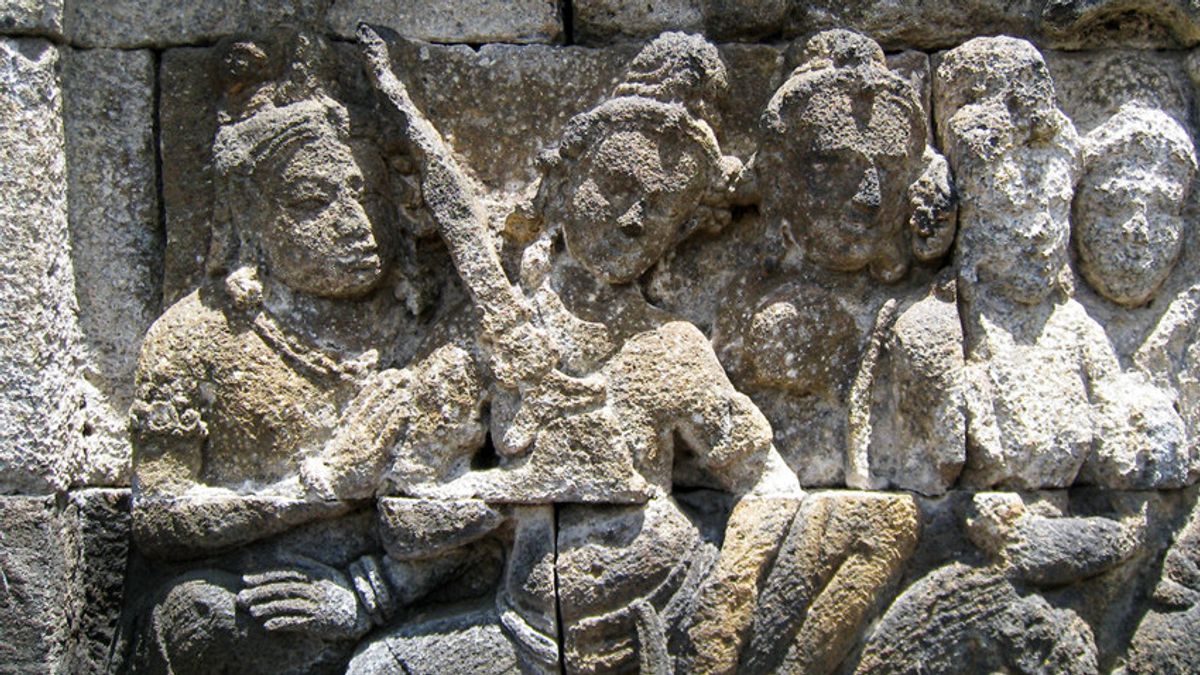JAKARTA - "Die with a keris stuck in your chest as a knight, not die with a spear stuck in your back for running from the battlefield."
That is the description of the philosophy of the heirloom named the keris spoken by Panji Sukma in his novel entitled Sang Keris (2020). Although only in the form of a novel, the second winner of the 2019 Jakarta Arts Council novel competition deserves a thumbs up.
How could he not be able to marry his passion for keris with Javanese culture mixed with interesting literary touches. In addition, the keris, which is widely known as a stabbing tool, shows the reality that the keris also occupies an important part in the life of Javanese society.
This is because the keris is included in the five perfection of life of a Javanese man, both from the rulers, priyais, to ordinary people. The five perfections of life, among others, are the guesthouse or house, women, kukila (birds as a hobby), turangga (horse as a symbol of vehicle), and suspicion (keris).
So, to get essential perfection, they are competing to get that perfection. One of them is about getting a keris. Even so, keris is considered not just a weapon in the manufacturing process there are four natural elements such as purosani, mangangkang, mangambal, and balitung.
Keris, as revealed by Garrett and Bronern Solyon in the book The World of the Javanese Keris (1988) is considered as confirming identity as an adult male and a responsible member of family and society.
Based on this, keris also often witnessed its master in playing the role of maintaining power, either when drawing tributes, seizing power, commanding attacks, or slaughtering other kingdoms.
"At first glance you (keris) remember that sensation, a sensation when you were used by your master to stab a king who was considered a descendant of Vishnu, the king's blood flowed through you and since then you have never enjoyed the sensation again," wrote Panji Sukma.
For this reason, it is natural that the keris has been known to play many roles in the life of the Javanese people in ancient times. Panji said, "Do not say you (keris) did not play a role, it would not have happened if you did not obey your master's wishes. He stroked the Keputeren garden fort so that the tall fortress sloped down, and your master managed to jump over it. "
“You also shed the guards to make them sleep, of course you still remember all that. Isn't that what always haunts your contemplation as long as you are in this place, ”said the writer Sang Keris.
The power of the keris
Allegedly, the shape of the keris which is similar to the present day actually appeared only in the 14th century, although it is possible that people already know the keris first. This was obtained from the relief at Sukuh Temple which is on the slopes of Mount Lawu (Karanganyar, Central Java).
In the relief, there is a scene where a blacksmith's workplace is depicted where a number of iron objects were produced. Uniquely, some of them have a stabbing tool with a slender, tapered blade which is believed to be a keris by keris experts.
Therefore, it is not wrong if Budiarto Danujaya in his writing entitled Keris: An Achievement of the Silam Period in the book "1000 Years of the Archipelago" (2000) explains the function of the keris in the past. He described, in the past, the belief that a keris has a certain "power" so that it creates legitimacy for someone to occupy a certain position has become a common thing.
"For example, Amangkurat II is said to have sent envoys to 'borrow' Puger's heirloom, namely Kiai Plered's spear and Kiai Mesanular's kris. When the original was delivered, Amangkurat II was gripped with fear, then angry. He immediately returned it and then asked to borrow a copy of the model, "wrote Budiarto Danujaya.

At that time, Kiai Plered was a royal heirloom from generation to generation, which was once used by the founder of Mataram, Panembahan Senapati, to kill his opponent Arya Panangsang (Jipang). Meanwhile, the Mesanular Kiai is the heirloom of the last king of the Majapahit king. For this reason, people believe the magical power of the heirloom is what makes even a king-class person afraid to touch it.
Not only that, the belief that a keris can bring legitimacy is also embedded in the traditions of those who inhabit villages in Java. Budiarto revealed, "For example, if there is an obstacle to attendance, due to death or a remote assignment, the marriage can still be carried out with the groom's keris as a substitute for his presence."
In fact, after being refined by civilization, the keris is often associated symbolically as a symbol of brotherly ties, or the keris is used as an offering to wait for the loom, to reject reinforcements, and so on. Furthermore, from a keris one can understand all aspects of culture and life through one single thing, namely the keris, which presumably extends to all corners of Javanese-related subjects.
It is not mere bluff, because it was revealed directly by Dr. Groneman in his most quoted book by subsequent keris writers, Der Kris Der Javaner (1910). However, when looking at the appearance and aesthetics of the keris, the opinion of Edward Frey, author of The Kris, Mystic Weapon of the Malay World (1986), has his own story. He considers, "Most weapons require sophisticated skill in metalworking, but a dagger is a better example of artistry in metalwork than any weapon."
Hopefully, the above opinion can be accepted when people see firsthand the form of the heirloom of the Javanese prince Diponegoro who was recently handed over by Balanda named the keris Nogo Siluman on March 3.
Regardless of the debate whether or not the heirloom belongs to Prince Diponegoro. Something that is certain, a wooden-handled keris with a carved golden dragon head on the bottom, as well as a dragon's body that extends to the tip of the keris among the plant tendrils which are also golden in color. At least, it is able to make people who see it amazed and make Nogo Siluman (return) discussed at all times every time a light discussion is held.
The English, Chinese, Japanese, Arabic, and French versions are automatically generated by the AI. So there may still be inaccuracies in translating, please always see Indonesian as our main language. (system supported by DigitalSiber.id)











